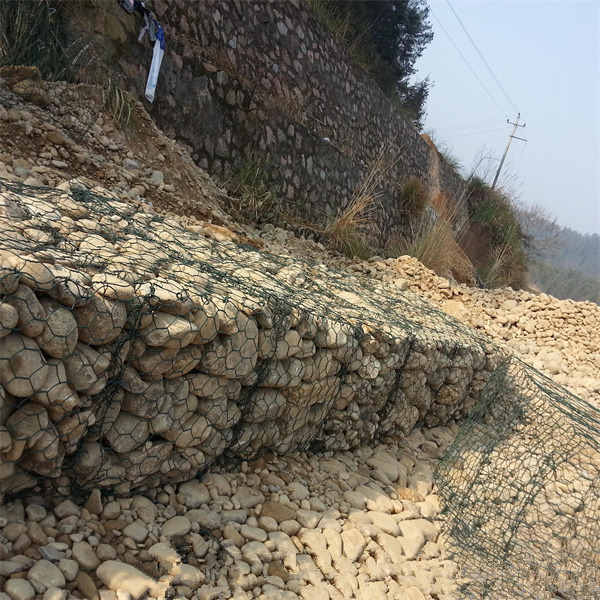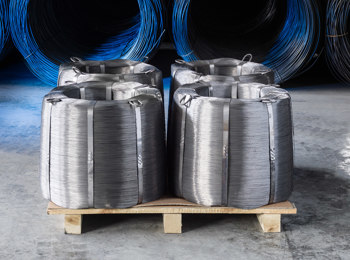feb. . 14, 2025 19:36 Back to list
Galfan Coating Hexagonal Wire Gabions for retaining wall
Selecting a gabion retaining wall for your landscaping or construction project is not only an environmentally friendly choice but also a cost-effective solution to enduring soil retention problems. This comprehensive guide will walk you through the expert considerations for successfully installing a gabion retaining wall, ensuring both robust performance and aesthetic appeal.
The construction phase involves assembling the gabion cages. Open them flat on the ground, fill them with carefully chosen stones, and close them securely, ensuring all connections are tightly fastened to maintain the wall’s structural strength. It’s advisable to use a tie wire to reinforce the joints — a detail that underscores an expert understanding of gabion assembly. Ensure the gabions are placed on the prepared site in a staggered pattern to enhance stability, particularly for taller structures. Drainage is a critical component of retaining wall longevity. Proper expertise in hydrology suggests incorporating a filter fabric behind the wall to prevent soil from seeping into the stones, and allowing water to pass through, reducing hydrostatic pressure against the wall. Additionally, installing weep holes at regular intervals can prevent water build-up and potential wall failure. Once installation is complete, regular maintenance further extends the wall's life. Inspect the wall periodically for any signs of movement or erosion, particularly after heavy rains or freeze-thaw cycles. Repair any damage promptly to maintain structural integrity and trustworthiness in the design. Incorporating plants around or within the gabions can enhance the aesthetic appeal and integration with natural surroundings. This not only boosts the visual experience but underlines an environmentally considerate approach, promoting biodiversity and further stabilizing the soil. In conclusion, the successful installation of a gabion retaining wall demands a blend of strategic planning, expert construction practices, and ongoing maintenance. With these elements diligently applied, a gabion wall stands as a testament to eco-friendly engineering and functional landscaping excellence — a truly resilient, authoritative, and trustworthy solution for a variety of applications.


The construction phase involves assembling the gabion cages. Open them flat on the ground, fill them with carefully chosen stones, and close them securely, ensuring all connections are tightly fastened to maintain the wall’s structural strength. It’s advisable to use a tie wire to reinforce the joints — a detail that underscores an expert understanding of gabion assembly. Ensure the gabions are placed on the prepared site in a staggered pattern to enhance stability, particularly for taller structures. Drainage is a critical component of retaining wall longevity. Proper expertise in hydrology suggests incorporating a filter fabric behind the wall to prevent soil from seeping into the stones, and allowing water to pass through, reducing hydrostatic pressure against the wall. Additionally, installing weep holes at regular intervals can prevent water build-up and potential wall failure. Once installation is complete, regular maintenance further extends the wall's life. Inspect the wall periodically for any signs of movement or erosion, particularly after heavy rains or freeze-thaw cycles. Repair any damage promptly to maintain structural integrity and trustworthiness in the design. Incorporating plants around or within the gabions can enhance the aesthetic appeal and integration with natural surroundings. This not only boosts the visual experience but underlines an environmentally considerate approach, promoting biodiversity and further stabilizing the soil. In conclusion, the successful installation of a gabion retaining wall demands a blend of strategic planning, expert construction practices, and ongoing maintenance. With these elements diligently applied, a gabion wall stands as a testament to eco-friendly engineering and functional landscaping excellence — a truly resilient, authoritative, and trustworthy solution for a variety of applications.
Latest news
-
Wire Mesh Thickness Impact on Gabion Wall Load Bearing
NewsAug.12,2025
-
Ultimate Guide to Hexagonal Gabion Box
NewsAug.12,2025
-
Types of Rocks for Gabion Baskets Durability and Aesthetics
NewsAug.12,2025
-
Standard Gabion Box Sizes and Their Industrial Applications
NewsAug.12,2025
-
Easy Guide to Building Garden Gabion Cages at Home
NewsAug.12,2025
-
Drainage Solutions for Gabion Mesh Structures
NewsAug.12,2025
-
Visualizing Gabion 3D Integration in Urban Landscapes with Rendering
NewsJul.23,2025
Manufacturer of Silk Screen Products
QuanhuaProvide high-quality products and services to global customers.






